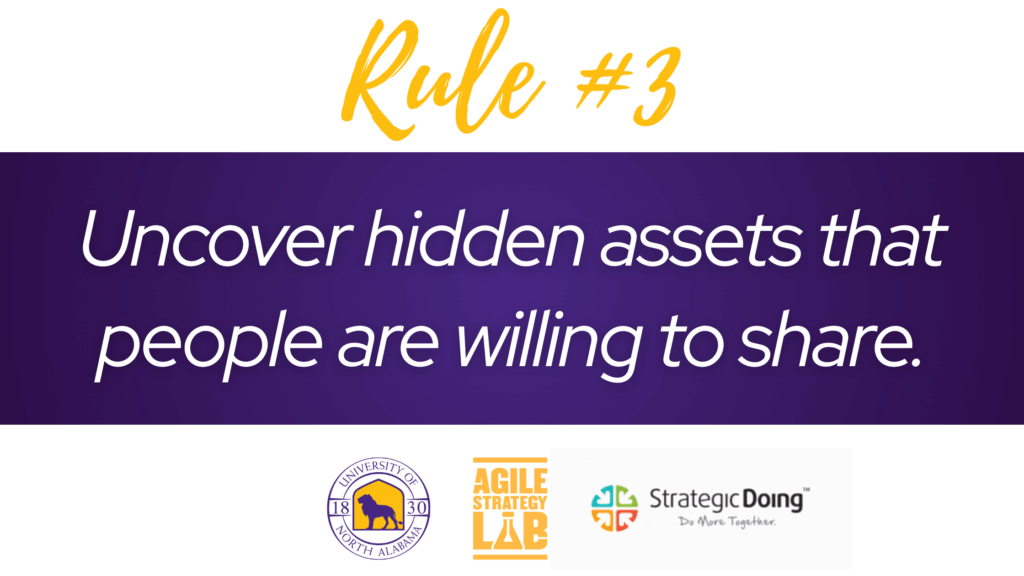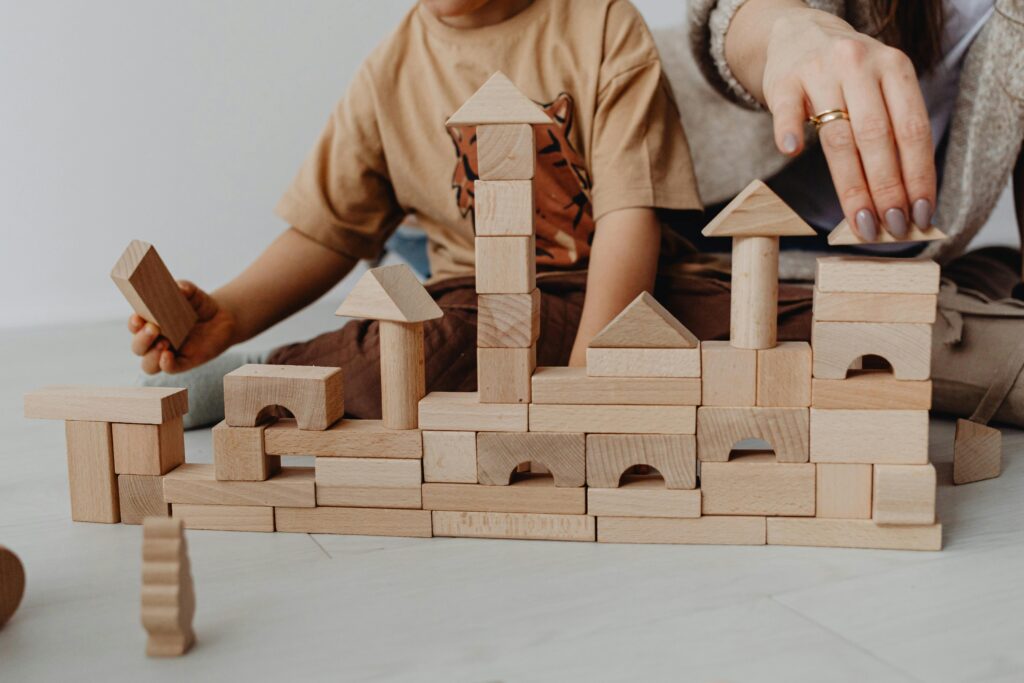Get out your building blocks
This is the fourth post in our 14-week series exploring the 4 Questions and 10 Rules of Strategic Doing, first outlined in this October 2023 blog post. Each week, we unpack one question or rule in more depth to give actionable tips to get started. Read the last two posts here and here.

With fall comes the beginning of the holiday shopping sprint – especially when it comes to kids’ toys and gadgets. Can you get your hands on whatever’s at the top of the wishlist? Yet, there are a few old favorites that have outlasted Jellycats (one of last year’s must-haves). One is good ol’ building blocks. I’ll admit, I was skeptical that these justified the (hefty) price tag. I was wrong – sometimes tradition gets it right; blocks will always be appealing, even in an age of electronic toys.

Building blocks “work” because they can be put together in countless ways. If children of the 60s built rocket ships, today’s preschoolers can put a wind farm next to their castle. Sometimes what’s built isn’t at all what a parent or teacher intended: play structure for a pet? Box to keep treasures out of easy reach? The only limiting factor is the builder’s imagination (and the number of blocks).
There are building blocks in agile leadership as well – we call them assets. If you want a resilient organizational or team strategy, your first step (after you’ve ensured a safe space and crafted a good question to convene the conversation) should be to get out the building blocks. Here’s a few tips to figuring out what your block collection is.
What’s an asset?
An asset is any resource that a group has at its disposal. Traditionally, at the Lab we ask people to think about physical assets, skill and knowledge assets, network assets, and capital assets. That doesn’t always cover the landscape these days – where does an AI tool fit? What about a patent? – but it’s a good starting point.
I’ve used the phrase “at its disposal” intentionally. An asset does no good if the group can’t get at it, either because no one on the team has access to it, or if the owner can’t or won’t share it (for whatever reason). More on that below.
Think expansively
We’ve seen what seemed like the oddest assets become key to an initiative – so don’t automatically discount any asset a group member brings forward. Good teams have cognitive diversity, and this is one place to use it: can the creative, out-of-the-box thinkers on the team imagine any plausible scenario in which the asset could be useful?
Think specifically
One asset we hear about a lot is “I know people.” Assuming you’re not involved in organized crime, this is not an asset. Drill down on the assets that people name. To go back to the blocks analogy: What size is it? What shape is it? Do you have it or did you just see it online?
Build your network to get more assets
One of the amazing truths of agile leadership is that teams always have more assets than they thought they did, and that’s usually enough to get started doing something together. But it is also true that sometimes you do need more – you’re unlikely to build that rocket ship without a cone-shaped block. In agile leadership, you’re thinking in terms of networks (not hierarchies), and building new networks. You should always have your eyes open for people or organizations that have assets you don’t, and build a relationship with them. You never know when you’ll need their help building something new.
Action step: Ask the people of a team you’re on what their assets are. Don’t limit people to assets they use in their current jobs. Past positions and even hobbies are fertile ground for exploring what building blocks the team has.
Learn more: the Asset-Based Community Development Institute has many resources to help identify a team or organization’s assets. If asset identification DIY doesn’t fit into your workload, the Lab can help as well – schedule a conversation to explore your needs and what our building blocks are.

Liz shepherds the expansion of the Lab’s programming and partnerships with other universities interested in deploying agile strategy tools. A co-author of Strategic Doing: 10 Skills for Agile Leadership, she also focuses on the development and growth of innovation and STEM education ecosystems, new tool development, and teaching Strategic Doing.
